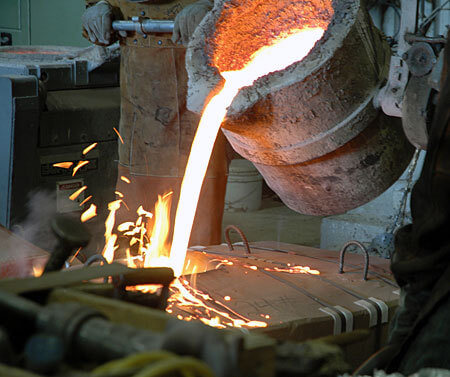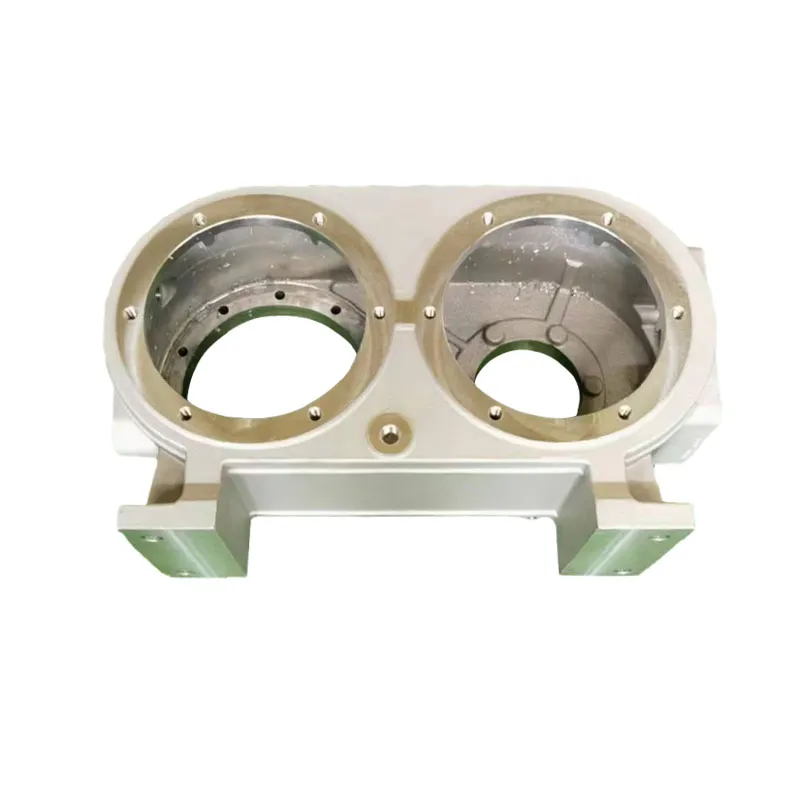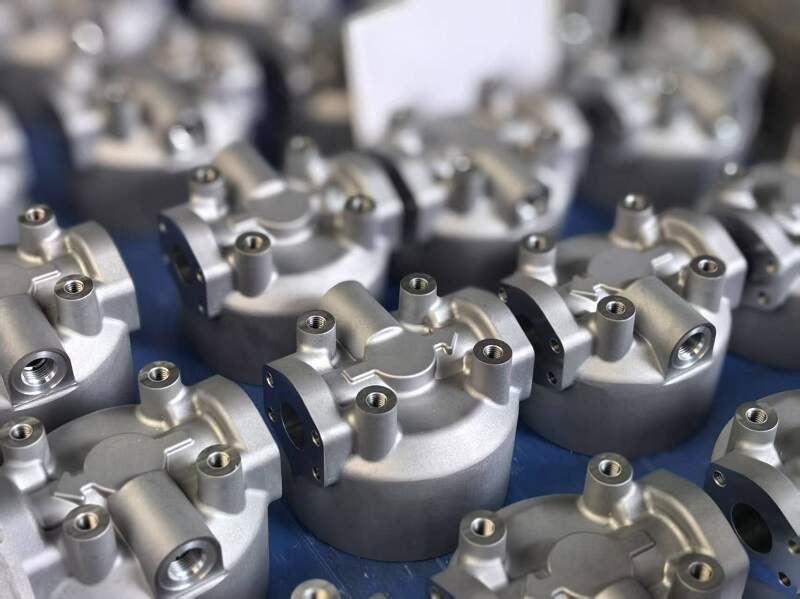Exploring the Innovative Procedures Behind Modern Aluminum Factory Procedures
Modern aluminum foundry procedures are going through considerable makeover. Automation and AI are improving manufacturing methods, improving both performance and accuracy. The combination of 3D printing is enhancing mold and mildew development, while sustainability methods are becoming a lot more vital. Each of these innovations plays an essential role in redefining the sector. However, the ramifications of these adjustments prolong beyond mere production efficiency. What chances and difficulties exist ahead for aluminum shops in this progressing landscape?
The Role of Automation in Light Weight Aluminum Foundries

Automation contributes to boosted safety and security criteria within the foundry environment. By transferring unsafe tasks to machines, human workers can concentrate on managerial duties and top quality control, minimizing the risk of mishaps. Additionally, information analytics derived from automated processes give valuable understandings into operational performance, bring about much better decision-making and continuous renovation. As the demand for light weight aluminum items grows, the adoption of automation innovations will likely increase, better transforming the landscape of aluminum shop operations.
Developments in Casting Technologies
Current advancements in casting innovations are transforming aluminum foundry procedures. Technologies such as 3D printing combination, progressed alloy formulations, and automated process optimization are boosting efficiency and product top quality. These advancements are essential in meeting the evolving demands of the industry.
3D Printing Integration
Incorporating 3D printing innovation into aluminum factory operations has actually reinvented typical spreading methods, improving both effectiveness and accuracy. This innovative method enables the rapid production of complex molds and cores, greatly reducing preparations and product waste. By utilizing additive production, factories can create complex geometries that were previously challenging or difficult to achieve with traditional techniques. The flexibility of 3D printing also makes it possible for fast style alterations, cultivating a much more agile production process. Additionally, this assimilation sustains making use of light-weight structures, which is progressively essential in industries such as auto and aerospace. As aluminum foundries proceed to embrace 3D printing, they position themselves at the center of technical improvement, driving improvements in product top quality and functional capabilities.
Advanced Alloy Formulations
The development of innovative alloy formulations has greatly boosted spreading modern technologies in aluminum foundry operations. These solutions incorporate numerous components, such as copper, silicon, and magnesium, to enhance mechanical properties and thermal resistance. By customizing the structure of light weight aluminum alloys, makers can achieve details performance characteristics that satisfy the demands of varied applications, from automobile components to aerospace frameworks. The use of sophisticated alloys additionally adds to decreased weight and raised strength, which are important aspects in modern-day engineering. Additionally, innovations in alloy growth allow far better fluidity throughout spreading, resulting in enhanced surface coatings and reduced flaws. On the whole, progressed alloy formulations represent a substantial leap forward, placing light weight aluminum factories to satisfy the evolving demands of numerous sectors successfully.
Automated Refine Optimization
Advancements in casting technologies have paved the way for automated process enhancement in aluminum foundry operations. By integrating innovative software program and real-time information analytics, foundries can now enhance production procedures and boost quality assurance. Automated systems keep track of variables such as cooling, temperature level, and stress prices, enabling immediate modifications that reduce problems and waste. Furthermore, machine knowing algorithms examine historical efficiency data to forecast excellent settings, thereby increasing effectiveness and decreasing cycle times. Robotics additionally play a significant duty, handling repeated jobs that enhance safety and security and precision. In general, these technologies not only drive functional effectiveness but likewise allow factories to satisfy the growing need for premium aluminum elements in numerous sectors.
Smart Production and Market 4.0 Combination
The integration of Smart Manufacturing and Industry 4.0 within light weight aluminum factories is changing functional efficiency. By leveraging IoT technologies, automation, and robotics, factories can enhance production processes and minimize downtime. Furthermore, information analytics supplies essential understandings that improve decision-making and drive continual renovation.
IoT in Factory Operations
As makers increasingly embrace the Net of Things (IoT), factory procedures are experiencing a transformative shift in the direction of clever manufacturing and Market 4.0 assimilation. Aluminum Casting Company. IoT modern technologies make it possible for real-time data collection and analysis, improving decision-making procedures and operational effectiveness. Sensing units and linked gadgets check tools performance, material use, and ecological problems, permitting proactive maintenance and resource optimization. This connectivity promotes an extra dexterous production atmosphere, where adjustments can be made quickly in action to market demands. In addition, IoT promotes improved traceability and top quality control, as information from the whole production cycle can be quickly accessed and evaluated. In general, the assimilation of IoT in foundry operations considerably enhances productivity and drives development in aluminum manufacturing processes
Automation and Robotics Combination
Automation and robotics combination is transforming aluminum shop procedures by enhancing effectiveness and accuracy. This transformative strategy enhances processes such as molding, putting, and finishing, reducing human error and boosting output consistency. By utilizing innovative robotic systems, factories can attain higher production prices while preserving stringent high quality standards. Automated systems also allow real-time monitoring and adaptive control, permitting quick adjustments to manufacturing specifications. Furthermore, the integration of robotics decreases labor prices and alleviates security dangers related to hands-on handling of molten steel. As factories welcome wise production principles integral in Sector 4.0, the synergy in between automation and robotics solidifies their one-upmanship, leading the method for lasting growth and technology in the light weight aluminum casting sector.
Data Analytics for Performance
Harnessing information analytics substantially boosts efficiency within aluminum shop procedures, aligning with smart manufacturing and Sector 4.0 principles. By leveraging real-time data collection and analysis, foundries can keep track of manufacturing procedures, forecast tools failures, and maximize resource appropriation. This data-driven approach assists in insightful decision-making, enabling supervisors to improve and determine traffic jams workflow. In addition, anticipating analytics equips foundries to prepare for market needs, thereby minimizing waste and making sure timely item distribution. Assimilation of information analytics with IoT devices boosts functional Aluminum Foundry exposure, fostering an aggressive upkeep society. Ultimately, applying these innovative analytical methods not only increases efficiency yet additionally drives advancement, positioning aluminum shops to fulfill the progressing needs of the industry while preserving competitive edges in a quickly changing landscape.
Sustainable Practices in Aluminum Spreading
While the light weight aluminum casting market has actually traditionally faced ecological obstacles, many shops are now embracing lasting practices to mitigate their effect (aluminum casting). A substantial emphasis has been on recycling light weight aluminum scrap, which not just reduces waste but likewise preserves power compared to main aluminum manufacturing. Innovative melting modern technologies, such as induction furnaces, improve energy efficiency and reduced greenhouse gas exhausts
In addition, foundries are executing closed-loop water systems to minimize water consumption and reduce thermal air pollution. Using environmentally friendly binders in mold-making procedures is acquiring traction, additional decreasing dangerous emissions.
Some facilities are investing in eco-friendly power sources to power procedures, aligning with worldwide sustainability goals. By incorporating these methods, the light weight aluminum spreading market is developing toward a more ecologically liable future, showing that financial growth can exist together with ecological stewardship - Aluminum Foundry. These efforts mirror a dedication to sustainability and the importance of environmental responsibility in production
Quality Assurance Innovations
As the aluminum spreading sector advances in the direction of sustainability, the relevance of quality assurance technologies comes to be significantly evident. Modern light weight aluminum shops are adopting advanced innovations to boost their quality control processes. Strategies such as real-time surveillance and data analytics allow producers to detect variances and defects early in the production cycle. Executing computerized evaluation systems outfitted with device finding out algorithms guarantees that products fulfill rigorous top quality requirements while lessening human mistake.
The assimilation of non-destructive screening approaches, such as radiographic and ultrasonic assessments, gives deeper understandings right into the stability of castings without harming the material. These developments not only enhance product dependability however likewise decrease waste, aligning with sustainability goals. On top of that, the adoption of standardized top quality frameworks assists streamline procedures throughout various foundries, assuring consistency in output. Collectively, these advancements are reshaping quality assurance, promoting a culture of excellence within the aluminum casting industry.
Future Trends in Aluminum Shop Procedures
What developments lie ahead for light weight aluminum foundry procedures? The future of aluminum factories is positioned for transformation through developments in automation, expert system, and sustainable methods. The assimilation of robotics and automated systems is anticipated to boost effectiveness and accuracy in the casting procedures, reducing human mistake and labor costs. In addition, AI-driven analytics will certainly allow real-time monitoring and anticipating upkeep, maximizing functional efficiency and reducing downtime.
Sustainability stays a prime focus, with factories increasingly embracing green practices, such as making use of recycled aluminum and creating low-emission melting technologies. Innovations in 3D printing are also expected to reinvent mold-making, permitting complicated geometries and lowered product waste. As the industry accepts digitalization, data-driven decision-making will become critical, enabling foundries to react swiftly to market demands. Collectively, these patterns promise to redefine light weight aluminum shop procedures, making them much more effective, sustainable, and adaptable to future difficulties.

Often Asked Questions
What Precaution Are Executed in Light Weight Aluminum Shop Operations?
Aluminum foundry operations apply numerous safety and security procedures, consisting of individual safety devices, air flow systems to manage fumes, normal safety and security training, emergency situation feedback strategies, and rigorous surveillance of temperature level and tools to stop crashes and warranty employee security.
Just How Do Factories Manage Labor Force Training for New Technologies?

What Materials Are Generally Recycled in Aluminum Foundries?
Aluminum foundries commonly reuse scrap light weight aluminum, consisting of post-consumer items like beverage containers, vehicle parts, and building and construction products. This recycling process minimizes waste and preserves resources, adding to a much more sustainable aluminum manufacturing market.
Exactly How Does Light Weight Aluminum Spreading Influence the Environment?
Light weight aluminum casting influences the setting via energy-intensive processes, greenhouse gas discharges, and possible regional contamination. However, innovations in recycling and sustainable methods can minimize these results, advertising a much more environment-friendly strategy to aluminum manufacturing.
What Are the Normal Lead Times for Light Weight Aluminum Spreading Projects?
Common lead times for aluminum spreading tasks vary considerably, usually ranging from two to six weeks. Variables influencing these timelines consist of complexity, order dimension, and product availability, influencing total production routines in shop procedures.
Automation increasingly plays a necessary function in light weight aluminum shops, boosting efficiency and accuracy in the production procedure. Innovations in casting technologies have actually led the method for automatic process enhancement in aluminum foundry procedures. Harnessing information analytics significantly boosts efficiency within light weight aluminum foundry operations, straightening with clever manufacturing and Sector 4.0 principles. A considerable focus has been on recycling light weight aluminum scrap, which not only minimizes waste however additionally saves energy compared to primary aluminum manufacturing. Aluminum factories generally recycle scrap aluminum, including post-consumer products like beverage canisters, automotive parts, and construction materials.